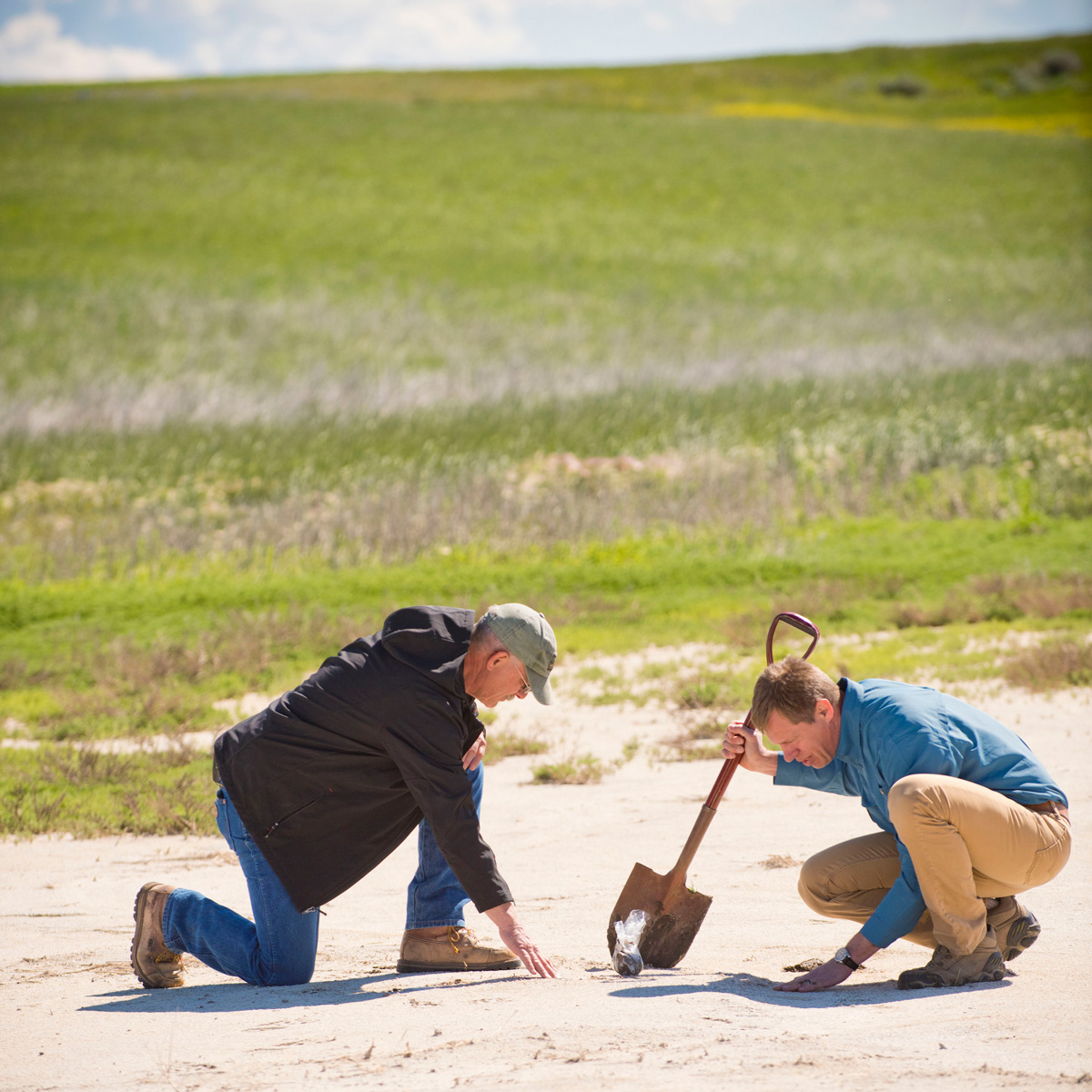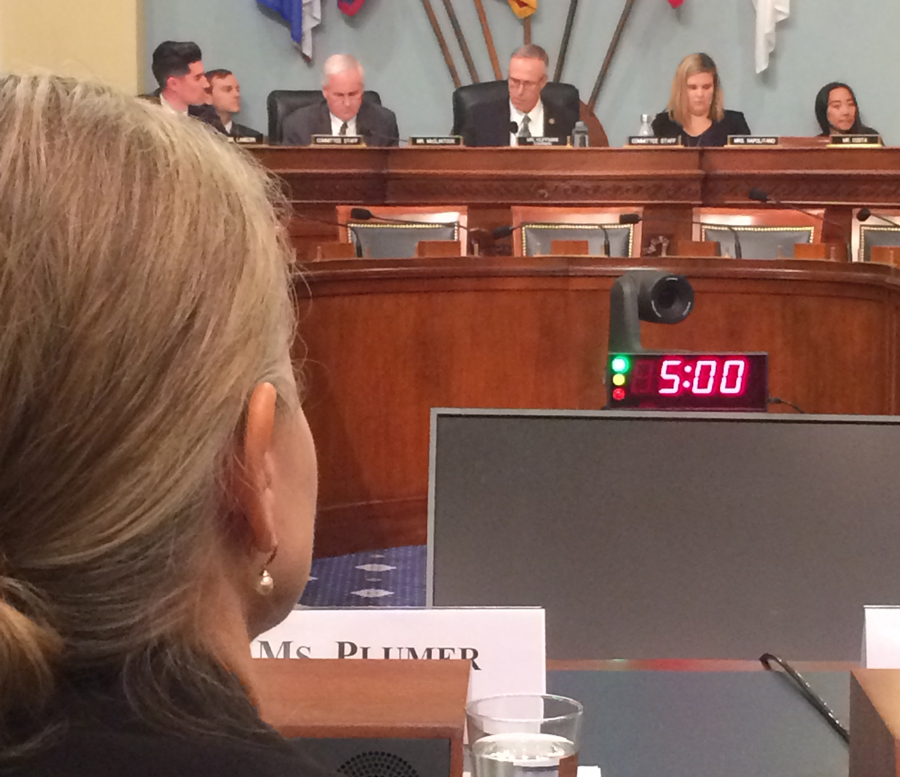44798489902_63ed1de247_o
Do you have any thoughts on this post?
Sportsmen and women applaud agency’s decision to conserve wildlife habitat and recreational opportunities
The Humboldt-Toiyabe National Forest has determined that 54,000 acres in Nevada’s Ruby Mountains will not be made available for oil and gas exploration.
The Forest Service released its Decision Notice and final Environmental Assessment today.
Forest Supervisor Bill Dunkelberger noted there was limited geologic potential for drilling in the area under consideration and there are concerns regarding potential harm to wildlife and scenic values.
The Ruby Mountains are home to Nevada’s largest mule deer herd, critical populations of the threatened Lahontan cutthroat trout, and numerous other fish and wildlife species. In addition, they are a popular destination for outdoor enthusiasts of all types.
Earlier this year Senator Catherine Cortez Masto (D) introduced a bill to prohibit oil and gas leasing on National Forest lands in this area.
“The Rubies offer some of Nevada’s finest hunting and fishing opportunities, and we’re glad that the agency has listened to the overwhelming public opposition to their development,” said Carl Erquiaga, the Nevada Field Representative for the Theodore Roosevelt Conservation Partnership. “While today’s announcement is very encouraging for those of us who care about these mountains, a permanent solution is needed to conserve this world-class hunting destination, and we encourage Congress to move without delay to pass the Ruby Mountain Protection Act.”
Photo credit: Tom Hilton
Whit Fosburgh testifies on Capitol Hill about opportunities to support the outdoor recreation economy.
Whit Fosburgh, president and CEO of the Theodore Roosevelt Conservation Partnership, testified on Capitol Hill today to highlight the contributions that hunters and anglers make to the outdoor recreation economy and conservation.
Fosburgh appeared before the Senate Energy and Natural Resources Committee to share the perspective of sportsmen and women on habitat and public access.
“The loss of access to the outdoors and public lands has happened over decades, and it won’t turn around without a concentrated effort by Congress and the administration,” said Fosburgh. “Nearby access opportunities disappear when fish and wildlife habitat is lost. But lost access doesn’t always mean a locked gate. When fields in northern Virginia are turned into subdivisions or shopping malls, habitat and access are lost. Access is lost when a South Dakota CRP field is converted to row crops. Access is lost when a waterfowl marsh in Louisiana disappears into the Gulf of Mexico because we’ve built levees along the Mississippi River that starve those wetlands of the sediments they need to survive. In Florida, boat launches sit empty in the face of algal blooms and red tides.”
Fosburgh also noted that demographic changes have had profound effects on access, especially in the West, where 72 percent of hunters depend on public lands for their hunting access.
“For much of the last century, a knock on the door and a friendly smile were often all it took to access or cross private lands in pursuit of fish and game,” said Fosburgh. “But in recent years, many working farms and ranches have changed hands. Some were subdivided, while others became second homes or recreational properties where ‘no trespassing’ signs and locked gates replaced de facto open access.”
Fosburgh called on Congress to take action by:
Fully funding the Land and Water Conservation Fund. Congress recently permanently authorized the LWCF, but for years the nation’s best conservation tool has been only funded at about 50 percent.
Directing the Forest Service and BLM to digitize all easements into electronic databases. Right now, neither the Forest Service nor the BLM are equipped to identify where they do or do not hold access across private lands, or where they should prioritize access acquisitions. This is because many of the agencies’ access easement records are still held on paper files at local offices and cannot be integrated into digital mapping systems that are foundational to public lands management in the twenty-first century.
Addressing the maintenance backlog on public lands. The maintenance backlogs are a staggering $11.6 billion for the National Park System; $2.2 billion for the U.S. Fish and Wildlife Service and Bureau of Land Management; and $5 billion for the Forest Service. The backlog manifests itself in degraded roads, trails, and campgrounds, all of which directly relate to quality access.
Including nature-based solutions in an infrastructure package. The upcoming Highway Bill is an opportunity to not only promote recreational access by investing in roads, trails, boat launches, and campgrounds but also by securing resources for migration crossings, aquatic connectivity, and barrier islands to protect coastal communities.
Taking recreational access into consideration in the BLM land disposal process. For the past year, 22 hunting, fishing, and conservation organizations have been encouraging the Department of the Interior to require that public access for outdoor recreation be considered when the BLM evaluates lands for disposal. We request that this change not only be administrative but also codified in statutory law.
Addressing climate change with smart public lands policies. The biggest threat to quality access and the outdoor economy is climate change. Hunters and anglers are on the front lines of our changing climate, with shifting migratory patterns, fishing closures due to heat, low flows, or algae blooms, invasive species, and longer wildfire seasons. Our nation’s public lands, if properly funded and managed, can serve as a bulwark against the worst impacts of climate.
Fosburgh’s entire testimony is available HERE.
Read about Christy Plumer’s testimony at a House subcommittee hearing, which also took place this week.
Without a doubt, the Conservation Reserve Program is a favorite for sportsmen and farmers—here’s a look at the sweeping changes the 2018 Farm Bill made to this important program
The Conservation Reserve Program helps America’s farmers, ranchers, and forest owners to voluntarily conserve environmentally sensitive land. Thanks to the wildlife habitat benefits of the program, CRP is a household name with landowners and sportsmen in some parts of the country. (At least as much as any of the Farm Bill conservation program acronyms can be.)
Introduced in the 1985 Farm Bill, CRP once supported 37 million acres devoted to conserving soil, water, and wildlife habitat. But Congress reduced the size of the program to just 24 million acres in the 2014 Farm Bill, which forced the U.S. Department of Agriculture to turn down thousands of CRP applications with millions of potential acres for conservation.
The hunting and fishing community pushed long and hard for a major increase to CRP acres in the new Farm Bill. Here’s what happened.

Fortunately, the 2018 Farm Bill added 3 million acres back into the program, increasing the size to 27 million acres and helping meet landowner demand. But the additional cost of growing the program was paid for by placing a cap on rental rate payments. For general CRP, which typically includes larger tracts of acreage, lawmakers capped rental rates at 85 percent of the county average, while rental rates for continuous CRP on environmentally sensitive lands were capped at 90 percent.
This means CRP will be less likely to outbid beginning farmers who often lease their land from landowners. The downside being that the lower rental rates could lead to a decrease in landowner demand for the program. We remain optimistic that these changes will help keep CRP viable, and the TRCP is working to ensure the program continues to benefit water quality, wildlife, and landowners as the 2018 Farm Bill is implemented.
The new Farm Bill also calls on the Secretary of Agriculture to target the CRP toward a handful of priorities. This includes enrollment of 30 percent of all CRP acres within continuous CRP, which promotes practices that benefit water and wildlife, such as riparian buffers, filter strips, wetland restoration, and more.
Additionally, the bill directs the Secretary to enroll up to 2 million acres into CRP grasslands, making the program a little more flexible for livestock and grazing operations. The 2018 bill also authorizes the Clean Lakes, Estuaries, and Rivers (CLEAR) initiative and directs the Secretary to maintain at least 40 percent of continuous acres in CLEAR practices focused on improving water quality by reducing farm runoff.
For general CRP, the bill now mandates that the USDA hold annual sign-ups. Considering the last general sign-up was held more than three years ago and had the lowest acceptance rate—about 20 percent—in the program’s history, a mandated sign-up is a critical step toward meeting landowner demand. The legislation also directs the agency to meet acreage quotas based upon historical state enrollments. This mandate will lead to the annual addition of larger tracts of land that are a favorite of upland bird hunters.
Combined, we achieved some meaningful legislative changes in the 2018 Farm Bill that help connect landowners with CRP’s conservation tools and extend the program’s benefits to water and wildlife. But future Farm Bills could do even more for CRP—the demand is there.
For a look at the other improvements the 2018 Farm Bill made for conservation, click here.
We took advantage of this exclusive opportunity to advocate for investments in conservation that support hunters, anglers, and the outdoor recreation economy
Christy Plumer, the Theodore Roosevelt Conservation Partnership’s chief conservation officer, told House lawmakers today that America’s conservation legacy is under attack, and Congress must take action to conserve the nation’s fish and wildlife.
Testifying before the House Subcommittee on Water, Oceans, and Wildlife, Plumer noted that in the 1970s, conservation spending made up more than 2 percent of the federal budget, and today it accounts for only about one percent.
“For more than three decades, budgets for agencies that manage our public lands have been squeezed and shrunk,” said Plumer. “Recreation facilities across the country are being closed or lie in disrepair. The expansion of human development across the landscape— including our cities and towns but also our highway infrastructure and energy development are leading to significant challenges in fish and wildlife management.”
She described these challenges being exacerbated by climate change.
“Sportsmen and women are on the frontlines and seeing the changes in fish and wildlife populations and our natural systems due to climate change,” said Plumer. “This includes shifting migratory patterns and mating seasons. We recognize something needs to be done and want to be part of the solution.”

Plumer noted that generations of conservation-minded leaders have created a public-lands network that is unparalleled supporting the ability of all Americans to hunt and fish, regardless of class or economic status.
“It is a system that benefits everyone, from the sportsman and woman to the hiker and those who simply want to drink clean water or experience wide open spaces,” said Plumer.
She relayed the following recommendations to Congress:
Theodore Roosevelt’s experiences hunting and fishing certainly fueled his passion for conservation, but it seems that a passion for coffee may have powered his mornings. In fact, Roosevelt’s son once said that his father’s coffee cup was “more in the nature of a bathtub.” TRCP has partnered with Afuera Coffee Co. to bring together his two loves: a strong morning brew and a dedication to conservation. With your purchase, you’ll not only enjoy waking up to the rich aroma of this bolder roast—you’ll be supporting the important work of preserving hunting and fishing opportunities for all.
$4 from each bag is donated to the TRCP, to help continue their efforts of safeguarding critical habitats, productive hunting grounds, and favorite fishing holes for future generations.
Learn More
